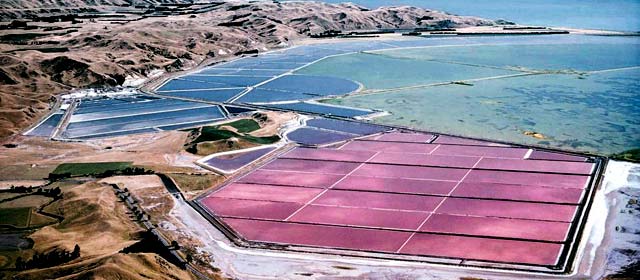Story summary
What is salt?
Salt (sodium chloride) is the main mineral in sea water. It is also found under the ground, and in our bodies.
What is it used for?
Salt is used to flavour food, and to preserve butter, meat and fish. It is also used in industry – in textile dyes, bleaching paper and curing leather.
Do we need to eat salt?
Our blood, sweat and tears contain salt, and we need to eat small amounts to stay healthy. But many people eat too much salt, which can cause high blood pressure and other problems.
Since 1924, iodine has been added to New Zealand table salt. In the past, many New Zealanders lacked iodine, and as a result, some had goitre – an enlargement of the thyroid gland causing a swelling of the neck. Now the disease has almost disappeared.
Salt in New Zealand
Māori got their salt by eating seafood. The early settlers had to import it, and a few people tried unsuccessfully to extract it from the sea. Salt was not made locally for many years.
Early days of salt making at Lake Grassmere
During the Second World War, Christchurch businessman George Skellerup needed salt to recycle old rubber. In 1942 he decided to start a salt works at Lake Grassmere, in the north of the South Island. The conditions were ideal for getting salt from sea water: the lake bed was large and flat, rainfall was low, and there was plenty of wind and sun to evaporate the water. By 1970 the salt works were producing almost 52,000 tonnes of salt a year.
How is salt made at Lake Grassmere?
By 2005, about half of New Zealand’s salt was being produced at Lake Grassmere. There are several steps in the process:
- Sea water is pumped into the lake.
- Wind and sun evaporate the water, leaving brine (salty water).
- The brine is moved to concentration ponds, where the salt content increases.
- Over winter the brine is pumped into holding ponds.
- Each October it is pumped into crystallisation ponds, where salt crystals form.
- The crystallised salt is scooped up, washed, and stacked in huge piles for delivery.
Lake Grassmere’s pink ponds are a unique sight – their colour comes from the algae and brine shrimps that live in salty water.





